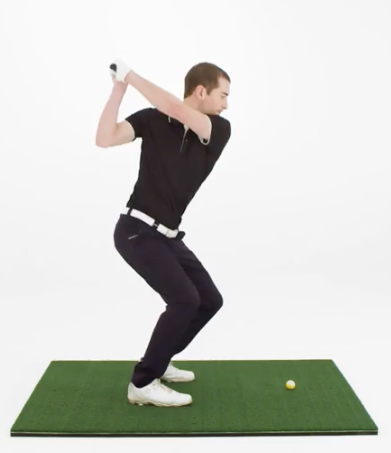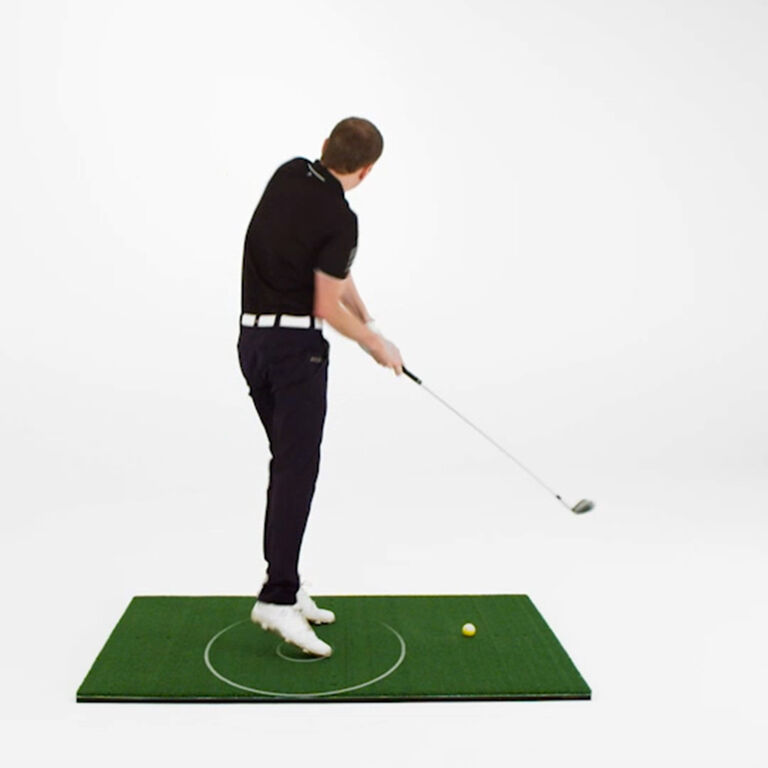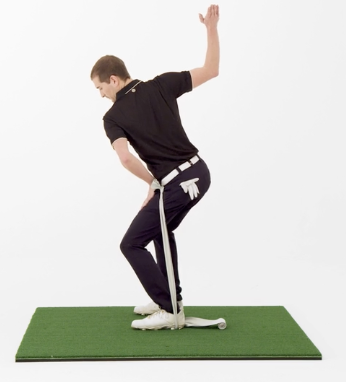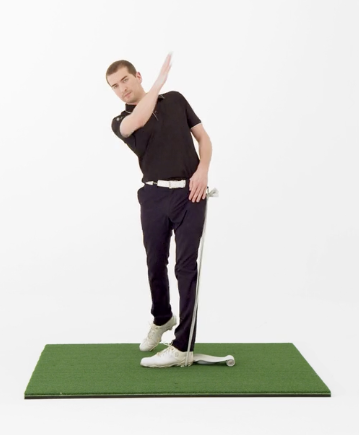Pressure as a training principle
From backswing to finish – skillful pressure application helps you achieve the perfect golf swing
If you think back to your physics class, pressure is a measure of the force being applied to any given surface. It might appear to you as a relatively innocent factor. It is not. Pressure, skillfully applied, translates into clubhead speed. Clubhead speed translates into hitting distance. The more pressure you learn to apply to the ground, the longer you can potentially hit. In fact, pressure is one of the most reliable, single indicators for swing improvement under the sun. How does this superpower work?
Why the high art of pressure application benefits the even higher art of hitting distance
Picture yourself about to complete a backswing. Before unleashing your swing, actually still in backswing, you let yourself drop. Your body goes down, or in training parlance, you “unweight” for a very short period.

Now, while you start your swing, your lead foot pushes back up again – forcefully! The resulting vertical force correlates with club head speed. And it works in proportion: the more force you apply to the ground, the more you can push back off, the greater the clubhead speed as a result.

Mental imagery to help your training
If isolation drills and the imagery behind it is not your thing, maybe try to picture it like this: your body dropping and bouncing up again is like a handle of a whip. Your arms are the whip’s lash. The sharper you move the handle back, the more crack you generate in the lash. The image of a whiplash is also useful to get a notion of the quality of force behind the more qualified golf swings: effortless and witchcraft-type of fast!
Interacting with the ground via pinpointed pressure generation has evolved into an established concept in professional athletic golf training. Pressure sensors and the training gear to synch it with video sequences come with a distinct advantage: you can measure. Indeed, with the pressure right sensors, you can measure very fine differences very accurately. Resulting in even more valuable feedback when you overlay the pressure data with video sequences. Both give you prompter and more reliable hints at improvement than what you were relegated to before – feeling.


A good way to become acquainted with the feeling of downward pressure as well as upward push is to work against a rubber band’s resistance on your lead leg’s side.
Support your movement feel with data
Mind you: it is still very important to feel your swing, feel the pressure distribution, feel every little detail of your power generation. The trouble with feeling is that it is an acquired skill. You have to develop your feeling, to consciously learn how and what to feel. That takes years, even if you are a dedicated golfer. By contrast, the video and pressure data can be had, well, almost at the crack of a whip. Especially if you train with BAL.ON. Try it out, let the data point you towards farther, straighter, and more consistent shots, and ultimately, the perfect golf swing!

